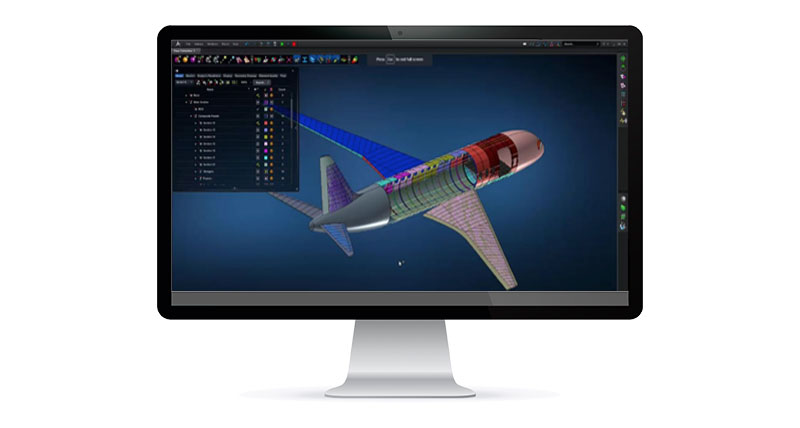Aircraft acoustic simulation and analysis
Acoustic simulation software to predict and optimise sound levels in aircraft
Contact us

A quiet cabin greatly enhances the comfort of a flight but reducing noise levels within the cabin and the cockpit is a complex design and engineering challenge.
Much of the noise experienced by passengers and crew comes from the aircraft engine and the vibrations caused by air passing over the fuselage. To reduce noise levels, design engineers need to carefully consider the design and materials of the aircraft structure.
In addition to looking at factors such as the noise reduction index of multi-layered structural materials, engineers have to ensure efforts to control interior sound don’t result in a heavier aircraft. In addition, it’s important to limit the number of costly prototypes that need to be built.
Hexagon’s specialised acoustic simulation software makes it possible to design lighter aircraft structures that combine lower interior noise levels with shorter development cycles. It can model a full range of materials, including structural and poroelastic materials. In addition, its automatic data analysis helps reduces engineering pre-processing and post-processing time, and it’s flexible enough to either work alone or integrated into existing simulation systems.
Much of the noise experienced by passengers and crew comes from the aircraft engine and the vibrations caused by air passing over the fuselage. To reduce noise levels, design engineers need to carefully consider the design and materials of the aircraft structure.
In addition to looking at factors such as the noise reduction index of multi-layered structural materials, engineers have to ensure efforts to control interior sound don’t result in a heavier aircraft. In addition, it’s important to limit the number of costly prototypes that need to be built.
Hexagon’s specialised acoustic simulation software makes it possible to design lighter aircraft structures that combine lower interior noise levels with shorter development cycles. It can model a full range of materials, including structural and poroelastic materials. In addition, its automatic data analysis helps reduces engineering pre-processing and post-processing time, and it’s flexible enough to either work alone or integrated into existing simulation systems.
Our solutions
Explore Hexagon solutions for acoustic simulation
Acoustic simulation software
Actran VibroAcoustics software combines dynamic, kinematic and acoustic constraints to simulate the acoustic...
Structural simulation software
MSC Nastran simulation software assesses the acoustic insulation performance of aircraft structures.
Design and validate faster
MSC Apex is a direct modelling and meshing software system that streamlines CAD clean-up.


